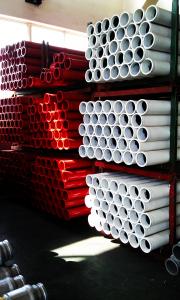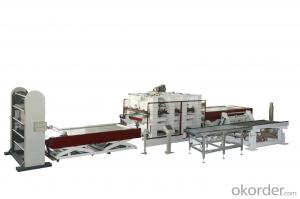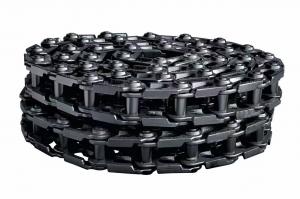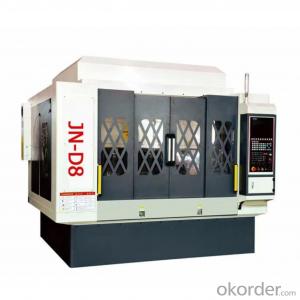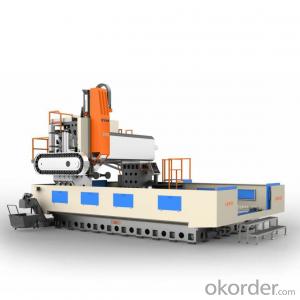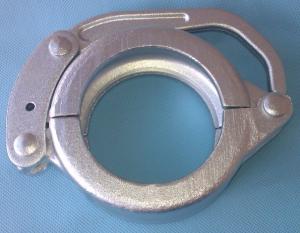Concrete Pump Pipeline
- Loading Port:
- China Main Port
- Payment Terms:
- TT OR LC
- Min Order Qty:
- -
- Supply Capability:
- -
OKorder Service Pledge
Quality Product, Order Online Tracking, Timely Delivery
OKorder Financial Service
Credit Rating, Credit Services, Credit Purchasing
You Might Also Like
Size: DN125 133mm*4.5mm*3000mm/ 140mm*7.0mm*3000mm
Material: ST52, 45Mn2, Double-Wall
Flange:SK(Putzmeister-Putzmeister)/ZX(Schwing-Putzmeister)/ FM(Schwing-Schwing) Flanges
Other products:
1) Putzmeister/ Schwing/ Zoomlion/ SermacRam Pistons
2) Putzmeister/ IHI/ Kyokuto/ Zoomlion/Sany Seperated Piston
3) Wear-resisting board and Cuts ink
4) Coupling and seal ring for Putzmeister,Schwing, Sany
5) Rubber hose
6) Cleaning seriesand others- Q:Are there any specific warranty options available for concrete pump spare parts?
- Concrete pump spare parts come with specific warranty options that provide customers with peace of mind and assurance of quality. Manufacturers and suppliers offer warranties on their products, which may vary depending on the provider. These warranties generally cover defects in materials or workmanship. It is advisable to carefully read and understand the warranty terms and conditions before purchasing concrete pump spare parts. This will help customers determine what is covered and for how long. Some warranties have limited coverage, while others offer extended warranties for an additional fee. It is crucial to adhere to the recommended maintenance and usage guidelines to ensure the warranty remains valid. If any issues or concerns arise during the warranty period, customers can typically reach out to the manufacturer or supplier for assistance.
- Q:What are the types of concrete pumps?
- The pump body and the conveying pipe are made up of. It is divided into piston type, extrusion type and water pressure diaphragm type according to the structure
- Q:How often should concrete pump water pumps be inspected and replaced?
- Concrete pump water pumps should be inspected regularly, ideally on a monthly basis, to ensure they are functioning properly and to catch any potential issues early on. However, the frequency of replacement will depend on various factors such as the pump's usage, maintenance, and overall condition. It is recommended to consult the manufacturer's guidelines and seek professional advice for determining the specific replacement schedule for concrete pump water pumps.
- Q:What are the different types of concrete pump hopper pins?
- There are several types of concrete pump hopper pins, including snap pins, lynch pins, and clevis pins. These pins are used to secure the hopper to the pump and ensure it stays in place during operation.
- Q:What are the indications of a damaged concrete pump boom?
- There are several indications that can point to a damaged concrete pump boom. These indications can include: 1. Visual damage: One of the most obvious signs of a damaged concrete pump boom is visible physical damage. This can include cracks, dents, or deformities in the boom structure. Any signs of structural damage should be taken seriously as they can compromise the integrity of the boom. 2. Leaks: Another indication of a damaged boom is the presence of leaks. If you notice hydraulic fluid or water leaking from the boom, it could be a sign of a damaged hose or fitting. Leaks can not only affect the performance of the pump but also pose a safety risk to the operator and those working around the equipment. 3. Misalignment: A damaged boom may also exhibit misalignment issues. If the boom is not straight or appears to be bent at an odd angle, it could indicate damage. Misalignment can affect the accuracy and efficiency of concrete placement, potentially leading to uneven or improper pouring. 4. Unusual noises: Strange or excessive noises during operation can be a sign of a damaged boom. Rattling, grinding, or squealing sounds can indicate loose or worn-out components, such as pins, bushings, or bearings. These noises should not be ignored, as they could worsen if not addressed promptly. 5. Reduced performance: A damaged boom may also result in reduced performance. If you notice a decrease in pumping capacity or difficulties in controlling the boom's movement, it could be an indication of damage. Poor performance can be caused by various issues, including hydraulic system problems, structural damage, or worn-out parts. In conclusion, it is crucial to regularly inspect and maintain concrete pump booms to identify any indications of damage. Promptly addressing these issues is essential to ensure the safety of operators, prevent further damage, and maintain the efficiency and performance of the equipment.
- Q:How often should concrete pump seals be replaced?
- The frequency at which concrete pump seals should be replaced depends on several factors, including the type of pump, the quality of the seals, the operating conditions, and the maintenance practices. Generally, it is recommended to inspect and replace concrete pump seals every 500 to 1,000 pumping hours or annually, whichever comes first. Regular inspection is crucial to identify any signs of wear or damage in the seals. Common indications for replacement include leaks, excessive vibration, reduced pumping efficiency, or visible degradation of the seal material. If any of these issues are observed, it is essential to promptly replace the seals to prevent further damage and ensure the optimal functioning of the concrete pump. It is worth noting that certain pumps may require more frequent seal replacements due to their design or operating conditions. For example, high-pressure pumps or those used in abrasive environments might experience accelerated wear on the seals, necessitating more frequent replacements. To prolong the lifespan of concrete pump seals, proper maintenance and care are essential. This includes regular cleaning of the pump and seals, ensuring proper lubrication, and following the manufacturer's guidelines for operation and maintenance. Additionally, using high-quality seals and regularly inspecting them for signs of wear can help extend their longevity. Overall, the replacement frequency of concrete pump seals should be determined through a combination of regular inspections, adherence to maintenance practices, and consideration of the specific operating conditions.
- Q:How does a concrete pump agitator motor prevent concrete from settling?
- A concrete pump agitator motor prevents concrete from settling by constantly agitating the mixture. The motor is typically equipped with paddles or blades that rotate inside the mixing drum, ensuring that the concrete remains in a homogeneous state. When concrete is being transported, it tends to separate due to gravity and the natural settling of heavier aggregates. This can result in a non-uniform consistency, with denser materials sinking to the bottom and water rising to the top. The agitator motor counteracts this settling process by continuously stirring the concrete. The rotating paddles or blades create a turbulent flow within the mixing drum, preventing the heavier aggregates from settling and maintaining a consistent mixture. This agitation helps to evenly distribute the cement, aggregates, water, and any additional additives throughout the concrete, resulting in a more uniform and reliable end product. By preventing the settling of concrete, the agitator motor ensures that the mixture is consistently workable and can be pumped or poured without any blockages or inconsistencies. This is especially crucial during construction projects where precise and consistent concrete placement is required. In summary, a concrete pump agitator motor prevents settling by agitating the mixture, keeping it homogeneous and ensuring a consistent flow during pumping or pouring operations.
- Q:How can one ensure proper documentation and record-keeping for concrete pump spare parts?
- One can ensure proper documentation and record-keeping for concrete pump spare parts by implementing a structured system. This system should include keeping a detailed inventory of all spare parts, including their quantities, descriptions, and specifications. Additionally, it is essential to maintain a log of all incoming and outgoing spare parts, noting the date, purpose, and responsible personnel. Regular audits and reconciliations should be conducted to ensure accuracy and identify any discrepancies. Proper labeling and organization of physical storage areas, as well as digitizing records, can further enhance efficiency and accessibility. Regular training and clear guidelines for staff involved in handling spare parts documentation will also contribute to maintaining accurate records.
- Q:Can concrete pump spare parts be coated with anti-corrosion or anti-wear coatings?
- Yes, concrete pump spare parts can be coated with anti-corrosion or anti-wear coatings. These coatings help protect the parts from the corrosive nature of concrete or the wear and tear caused by continuous pumping. The coatings can extend the lifespan of the spare parts and improve their performance and durability.
- Q:How can one ensure proper functioning of concrete pump spare parts after installation?
- To guarantee the effective operation of concrete pump spare parts post-installation, several pivotal measures can be taken: 1. Quality Assurance: It is imperative to procure spare parts from reputable manufacturers or suppliers. Confirm that the spare parts are of superior quality, constructed from durable materials, and adhere to industry standards. This will significantly diminish the risk of malfunctioning components. 2. Proper Installation: It is crucial to adhere to the manufacturer's guidelines and recommendations regarding the installation of concrete pump spare parts. Each element should be installed accurately, with the appropriate torque and alignment. Seeking professional assistance if necessary is advisable to ensure proper installation. 3. Regular Maintenance: Consistent maintenance is vital for the effective operation of concrete pump spare parts. Establish a maintenance schedule and adhere to it diligently. This encompasses inspecting and cleaning the spare parts, checking for any indications of wear or damage, and lubricating moving parts as required. 4. Timely Replacement: Over time, concrete pump spare parts may deteriorate or sustain damage due to continuous usage. Monitoring the condition of the spare parts is crucial, and replacing them promptly when necessary is essential. Regularly inspecting the components and promptly replacing any worn-out or damaged parts will help maintain the proper functioning of the pump. 5. Training and Education: Ensuring that operators and maintenance personnel receive proper training and education is vital for the effective operation of concrete pump spare parts. They should be familiar with the equipment, its spare parts, and the correct procedures for installation and maintenance. Regular training sessions can enhance their knowledge and skills, resulting in better maintenance and performance of the spare parts. By adhering to these steps, one can ensure the proper functioning of concrete pump spare parts after installation, thereby enhancing the overall efficiency and longevity of the equipment.
1. Manufacturer Overview |
|
|---|---|
| Location | |
| Year Established | |
| Annual Output Value | |
| Main Markets | |
| Company Certifications | |
2. Manufacturer Certificates |
|
|---|---|
| a) Certification Name | |
| Range | |
| Reference | |
| Validity Period | |
3. Manufacturer Capability |
|
|---|---|
| a)Trade Capacity | |
| Nearest Port | |
| Export Percentage | |
| No.of Employees in Trade Department | |
| Language Spoken: | |
| b)Factory Information | |
| Factory Size: | |
| No. of Production Lines | |
| Contract Manufacturing | |
| Product Price Range | |
Send your message to us
Concrete Pump Pipeline
- Loading Port:
- China Main Port
- Payment Terms:
- TT OR LC
- Min Order Qty:
- -
- Supply Capability:
- -
OKorder Service Pledge
Quality Product, Order Online Tracking, Timely Delivery
OKorder Financial Service
Credit Rating, Credit Services, Credit Purchasing
Similar products
New products
Hot products
Related keywords
